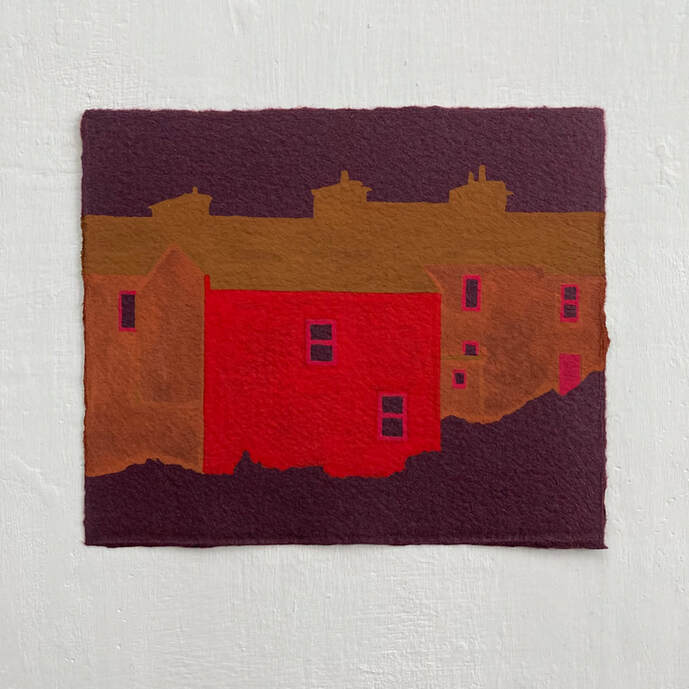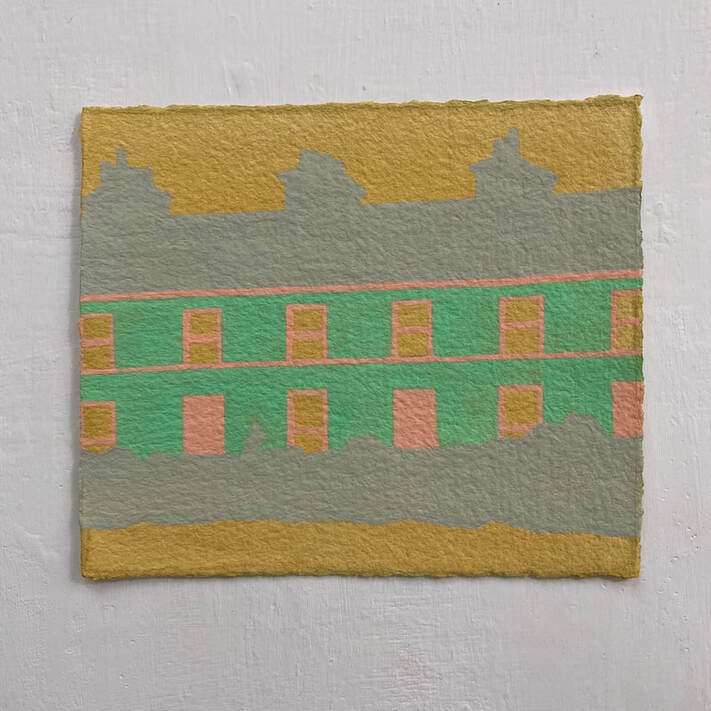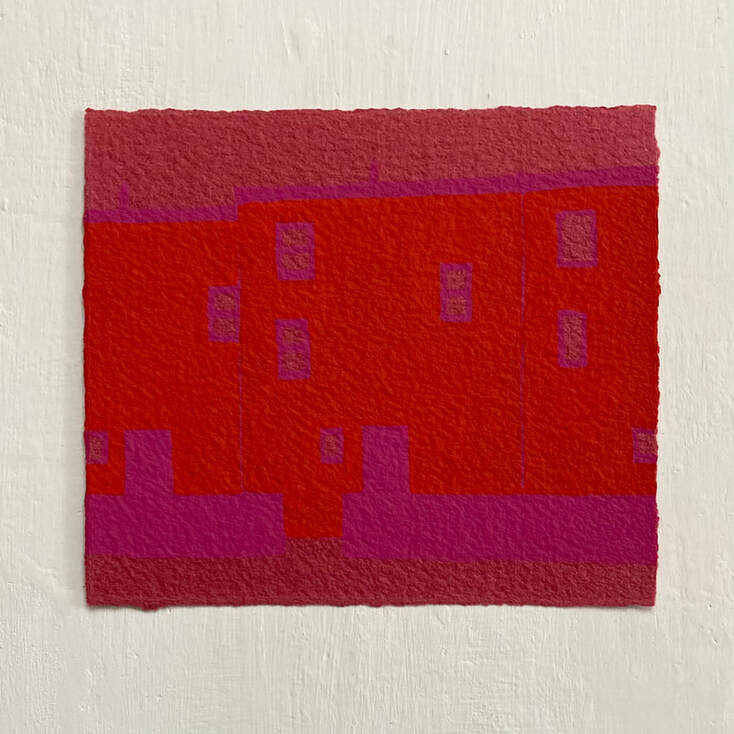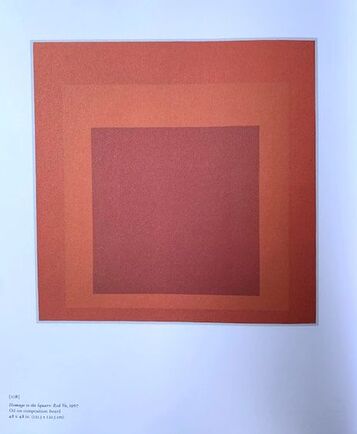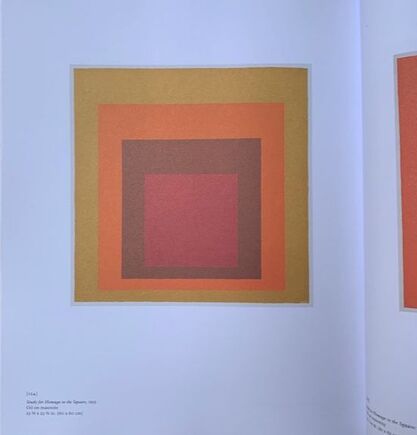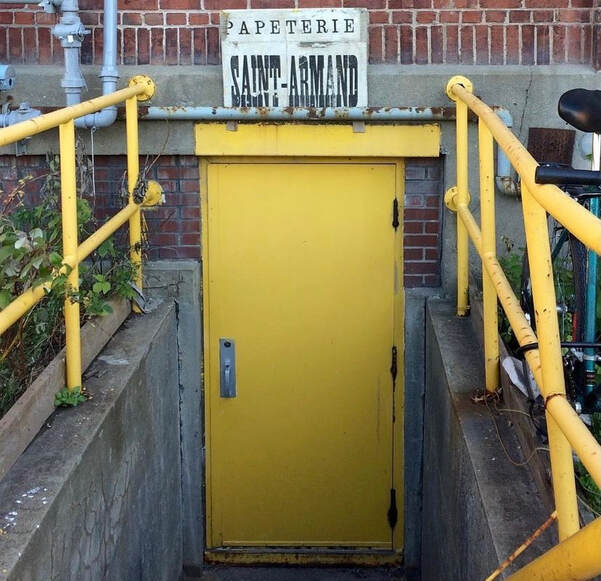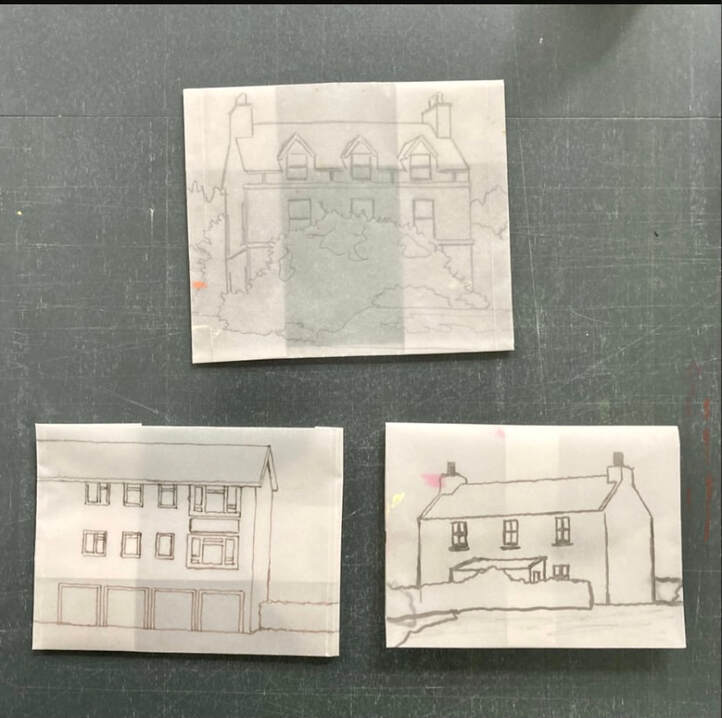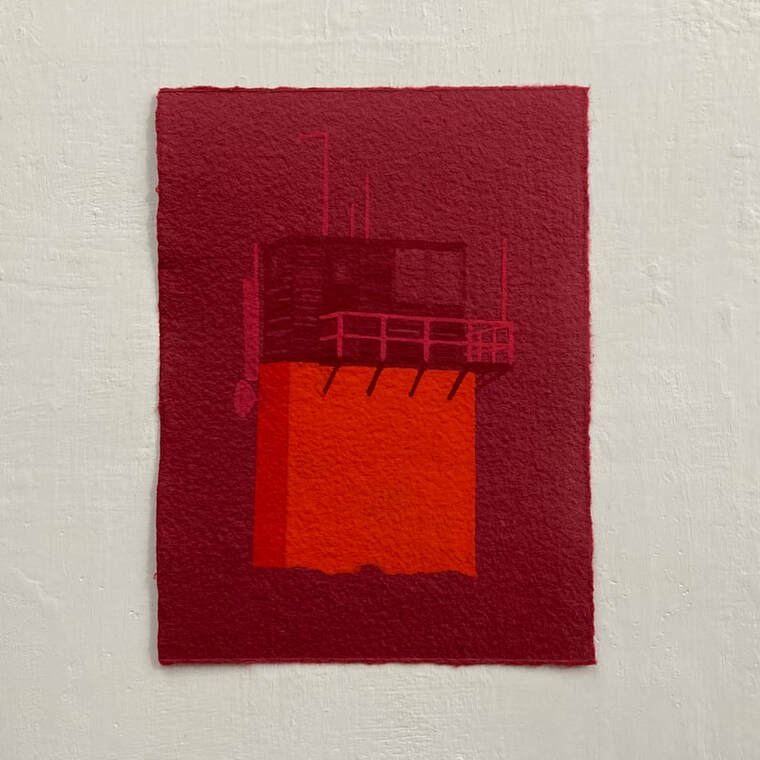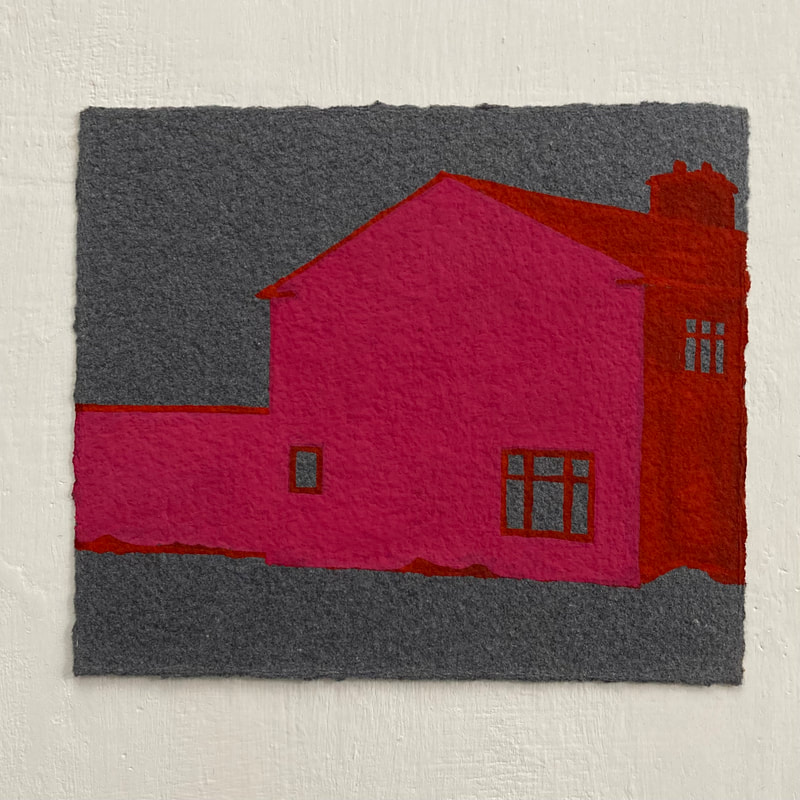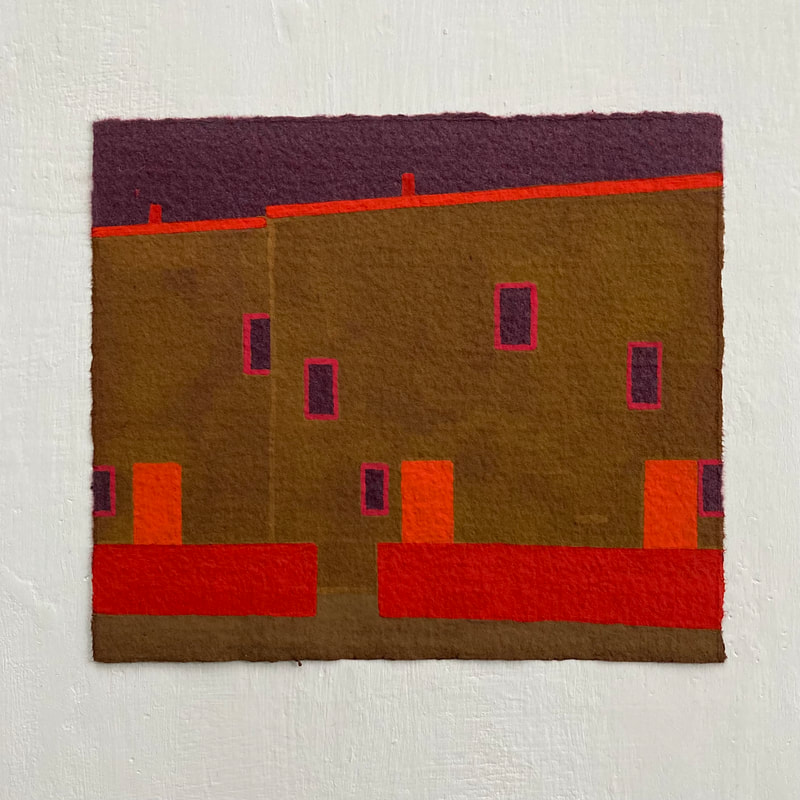|
10/21/2021 0 Comments #8: 10/21/2021Mark Beldan by Benjamin Terrell Lately it seems that just as something we lit stops smoking, the planet scratches an itch and sends us something dark, different and in need of figuring out. One day it's a new viral strain, the next another symptom of our neglect. The sun, red in the morning, means the sky will be orange in the afternoon. There is a kind of music made from us acting like the center of everything and the universe reminding us we are not. We are like the world's worst opening act who refuse to leave the stage gracefully. But humans keep being born because we remember liking it here. Increasingly, our lives are lived mostly in our heads and in front of home screens. The "outside" has become like a twice a year time share that we visit only when everything is exactly to our liking. Our skill, the ability to store memories and to be limited or liberated by them, is a human's eternal awkward dance move and I suspect is the source of at least half of the greatest art ever made. Strand Street 2021, gouache on paper, 14 x 17 cm (about 5 1/2" x 6 3/4") photo courtesy of the artist The mind is a house to our identities and preferences, just like our homes are where we grow, make memories, and first emerge to meet the world. Both are places where something fixed meets something fluid and in what feels like an increasingly unstable world, we grow more reliant on the stability of what we call home. Sometime a house is a head. Imagine- windows look out like eyes, the door centered is a nose, and picture a mouth below the earth as a kind of countenance and grounding. Humans, however, romanticize being less grounded, disconnecting and taking flight. Most birds don't romanticize flight like we do- for them it is a way of being. Rather, they are fascinated by walking, many only able to do small amounts of it at a time. In their nests at night, they dream of what it would be like to be more firmly planted on the ground. For those birds, the earth is intriguing and is, like poet Robert Creely writes, "..the bottom of the sky." Factory Lane 2021, gouache on paper, 14 x 17 cm (about 5 1/2" x 6 3/4") photo courtesy of the artist Walking into a room of artist Mark Beldan's paintings of houses could feel like a partially transformed butterfly looking back too soon at its cocoon. But his images, opulent and abstracted of detail, are necessary repeating mantras and modest reminders of how thin the veil is that separates us from everything we can't control. Mark's houses and buildings are painted on paper, are cropped center stage and although essentially anonymous, both blur and balance mystery with something familiar and universal. These are habitats that will house body and mind long after the viewer's brief existence between space and what we call self. Once confronted with our own shell we may discover we belong to neither surf nor sand. Laurel Street, Haggerston 2021, gouache on paper, 14 x 16 cm (about 5.5" x 6 1/4") photo courtesy of the artist I have read that after twenty-six years of painting countless variations of colorful squares within squares, Josef Albers thought the last image of his series, "Homage to the Square" was "...reminiscent of terrestrial reality and its place in the cosmos." Mark Beldan's houses are natural neighbors to Albers's homages, but where the color climates of the latter creates movement, in the former they distill stillness. For Albers, shapes are actors and color combinations create performances; for Beldan, color conceals and shapes like doors and windows keep out action or availability. Albers' incantations invoke the external universe while Beldan's buildings vibrate and evoke something deep within. Beldan's houses are like hard drives holding the past, present and all the potential parallels between. Josef Albers: Homage to the Square Author Kenya Hara, writing about the color white, notes that the color contains both temporal and spatial principals and is "all color" and "no color" at the same time. Beldan pairs bright harmonic hues that exist in a comparable dissolving space. Like the author's version of white, Beldan's color combinations contain a "latent possibility of transformation." Hara also writes, "the role that paper plays in our life is being transformed by the growth of electronic media." Beldan's houses are painted on handmade paper the colors of a vibrant fall. His choice of material feels like the last leaves on the tree that is the “Gutenberg galaxy” signifying cycles of ending and beginning. The doorway to Papeterie Saint-Armand in Montréal, Québec, where Beldan sources his paper: http://www.st-armand.com/index.php Poet Davis Whyte writes that, "memory makes the now fully inhabitable.' According to Whyte, "all epochs live and breathe in parallels" as if to say, time is a brick and memory a porous mortar to the house of our shared histories and potentials. In Beldan's Laurel Street Haggerston, a building of orange red recedes into a vibrant pink background blurring the threshold of then and now. Looking closer, connecting houses repeated -but only partially seen- seem to imply infinity, especially if you imagine every face that ever looked out of each of the building's seven windows. Mountain Road depicts a spring green house of some age glowing in the middle of a gold green surrounding. A modest house with a chimney on either end speaks to how we have historically inhabited spaces. Seeing Beldan's paintings here in Oregon reminds me, after last year's devastating fires, of seeing chimneys without houses and, most currently, cities of tents under overpasses and along sidewalks. Initial phases of Beldan's process. An interesting addition to the houses of Beldan's show, "Brick and mortar," is the painting Radio Tower. In the picture, an odd, orange, two toned turret both blends into a crimson background and casts a shadow from its second story balcony. The structure retreats and floats in both form and function, radio being the antiquated connective precursor to the internet. The tower, monument and marker to its own obsolescence, brings to mind every forgotten and outdated devise once relied on for our connection. Technology, too, is an ephemeral shell we always grow out of. Paintings of houses can be like the sounds of that shell; both are containers of the bandwidth of our humanity and both are reminders that we were here. Radio Tower 2021, gouache on paper, 19 x 14 cm (about 7 1/2" x 5 1/2") photo courtesy of the artist Mount Pleasant 2021, gouache on paper, 14 x 16 cm (about 5 1/2" x 6 3/8") photo courtesy of the artist Acer Road 2021, gouache on paper, 14 x 16 cm (about 5 1/2" x 6 3/8") photo courtesy of the artist You can see more of Mark Beldan's work:
on his website on instagram as @markbeldan and his current show, Brick and Mortar, is up at One Wall Gallery in Eugene, Oregon (USA). The gallery resides inside of Epic Seconds.
0 Comments
Leave a Reply. |
|
